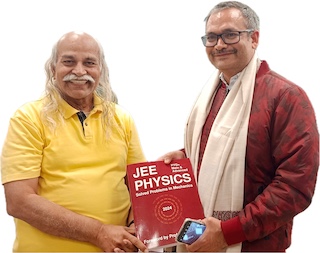Effect of core on LR circuit
This is one of the experiment in NAEST prelims (2014). The objective is to study the effect of core on the LR circuit voltages.
In LR AC circuit, the current is given by \(i=\frac{V}{\sqrt{R^2+\omega^2 L^2}}\). This assumes an AC source giving voltage of fixed rms voltage \(V\) and frequency \(\omega\). However transformer has more complex working and the voltage supplied depends on resistance and inductance in the circuit.
Procedure
You need a solenoid, bicycle spokes, a known resistor, a 12 volt transformer with center tapping, connecting wires with clips, graph paper, 5 A power socket with a switch
Make a series L-R AC circuit joining solenoid and the known resistance with the transformer. Using multimeter you can measure the solenoid resistor and also the AC RMS voltage on different parts of this series circuit. The value of \(\omega\) can be calculated from line frequency 50 Hz. You can also measure the current \(i\) using the multimeter. Your multimeter may not have AC current measuring option. But you can measure the AC voltage across the given resistance and divide it by the resistance value to get the current in the circuit.
Connect the circuit and put the power on. Measure voltages across the solenoid, resistor and the transformer secondary. Do it without any core and then after putting some cycle spokes in the solenoid. Do it with different number of spokes and give your data on how the three voltages and the current in the circuit varies with number of spokes put in.
Make a graph to show the variation of transformer output voltage as a function of number of spokes.
With no spoke in the solenoid, calculate the inductance of the solenoid using the current equation given above. (This may not be the true inductance as you are using an ideal AC source equation.) The multimeter often has display up to one decimal place. If it reads 2.2, the actual value may be anywhere between 2.15 to 2.25. Calculate the range of uncertainty in the value of \(L\).
Related
Subscribe to our channel
